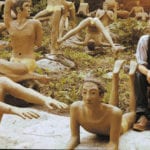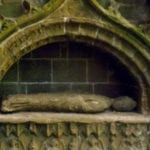 Music
Music  Music
Music  History
History 10 Less Than Jolly Events That Occurred on December 25
 Weird Stuff
Weird Stuff 10 Funny Ways That Researchers Overthink Christmas
 Politics
Politics 10 Political Scandals That Sent Crowds Into the Streets
 Weird Stuff
Weird Stuff Ten Bizarre Facts About The Doge Meme
 Our World
Our World 10 Ways Your Christmas Tree Is More Lit Than You Think
 Movies and TV
Movies and TV The 10 Coolest Stars to Set Sail on The Love Boat
 History
History 10 Things You Didn’t Know About the American National Anthem
 Technology
Technology Top 10 Everyday Tech Buzzwords That Hide a Darker Past
 Humans
Humans 10 Everyday Human Behaviors That Are Actually Survival Instincts
 Music
Music 10 Surprising Origin Stories of Your Favorite Holiday Songs
 History
History 10 Less Than Jolly Events That Occurred on December 25
 Weird Stuff
Weird Stuff 10 Funny Ways That Researchers Overthink Christmas
Who's Behind Listverse?

Jamie Frater
Head Editor
Jamie founded Listverse due to an insatiable desire to share fascinating, obscure, and bizarre facts. He has been a guest speaker on numerous national radio and television stations and is a five time published author.
More About Us Politics
Politics 10 Political Scandals That Sent Crowds Into the Streets
 Weird Stuff
Weird Stuff Ten Bizarre Facts About The Doge Meme
 Our World
Our World 10 Ways Your Christmas Tree Is More Lit Than You Think
 Movies and TV
Movies and TV The 10 Coolest Stars to Set Sail on The Love Boat
 History
History 10 Things You Didn’t Know About the American National Anthem
 Technology
Technology Top 10 Everyday Tech Buzzwords That Hide a Darker Past
 Humans
Humans 10 Everyday Human Behaviors That Are Actually Survival Instincts
10 Places Between This World And The Next
Many belief systems ascribe to an intermediate state in between this world and the next. These “areas between” serve a range of purposes. Sometimes, it’s judgment or reflection. Other times, it’s merely passage or simply a holding area for those with nowhere else to go.
10 The Bosom Of Abraham
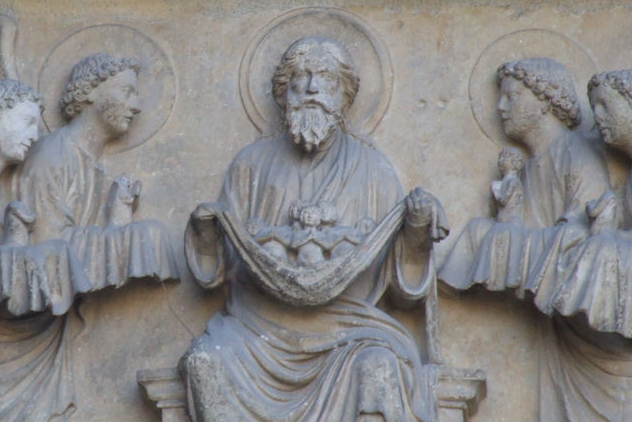
The Gospel of Luke refers to a place called the “Bosom of Abraham,” where Jesus said in a parable that a deceased beggar named Lazarus resided after death. Some Jewish writings compare the Bosom of Abraham to a paradise, but early Christian works generally present it as a kind of limbo where the righteous who died before Christ’s resurrection went to await his coming.
According to the Hellenic Testament of Abraham, Adam sits at the gate of Hell and Paradise, but later views have Abraham sitting there. This underworld was divided into two parts, Gehenna and Abraham’s Bosom, separated by a large gulf in between. On one side, the souls of the wicked reside in continual torment. On the other side are the souls of the righteous, who enjoy a kind of paradise. Early Christian traditions, however, hold both as mere temporary holding tanks until the eternal revival in Heaven.
The New Testament says that Jesus “descended into Hell,” but the exact meaning of those words has been a matter of debate by Christian theologians for centuries. Although many modern Christian views take it as a metaphor, traditional Catholic doctrine says that Jesus descended to Hell to deliver those who were righteous yet still there because of original sin. In this sense, Abraham’s Bosom was where the righteous souls who died prior to Christ’s appearance went to await his resurrection. Other interpretations say that the “Hell” mentioned included the entirety of its occupants, and that Jesus went to save both the righteous and unrighteous. This, though, is a less popular interpretation.
9 The Rivers Of Death
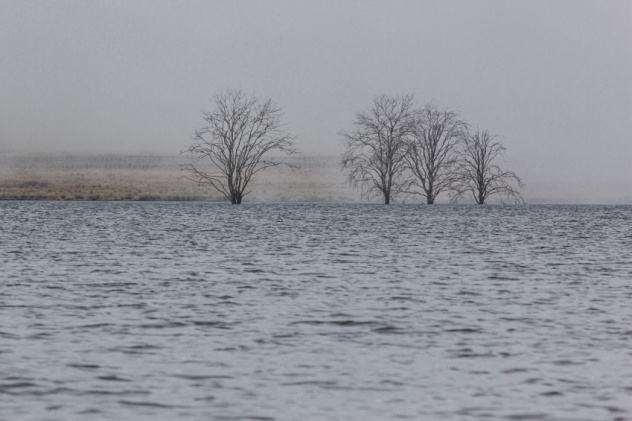
Several religions have rivers separating this world from the next, which serve as pathways to the afterlife. Styx is well-known, though its magical power to make one invulnerable is not. The Styx legend, much like Hades itself, has the river sharing the name of the goddess whose domain it belongs to. Styx was the first goddess to rush to the side of Zeus during his war with the titans. In honor of her loyalty to him, Zeus proclaimed that whenever the gods swore an oath, they would do so on Styx. The god swearing the oath would receive a cup of Stygian water, then pour it out as he made the promise. Given that the waters were not foul as imagined, but rather a deep, lapis lazuli blue, this was not necessarily a terrifying thing. Achilles was dipped in the river to make him invulnerable, all except for his heel, where his mother held him.
Hubur is a legendary Mesopotamian river very similar to Styx, save for the invulnerability legend. Like Styx, it is associated with a god, and even a boatman is mentioned in connection with it. Unlike the boatman’s Stygian incarnation, however, Hubur’s is a four-handed demon with the face of a stormbird.
Likewise, Shinto legend a speaks of the Sanzu River, which must be traversed to get to the underworld. In some traditions, people were said to make the crossing on the seventh day after death. The Shinto version is a little more forgiving than Greek and Mesopotamian versions, since the dead can come back to Earth on the seventh day as a final farewell before they cross to the afterlife. There is also an annual holiday called Obon, during which the spirits can go and visit their families for a time.
8 Hamestagan

A Zoroastrian concept, Hamestagan is where the souls of those whose good and bad deeds were found to be equal await resurrection. Souls are weighed on the scales of the god Rasnu, and it is believed that the concept of Hamestagan appeared as an answer to the question of what happens to souls whose good and bad deeds weighed the same.
Hamestagan is located between the center of the Earth and the sphere of the stars and has traits of both areas. Souls there are said to suffer both extremely cold and hot weather. Hamestagan is not a place of punishment though, so the cold or heat that they endure is not so much torture as a product of the location of their afterlife.
There are, however, different areas for those considered both good and wicked. A good man who made several grave errors, for example, will go to the good Hamestagan. A wicked man who did several very good acts will go to the wicked one. There is apparently no difference between the two except for who is sent where. Regardless of a soul’s fate, it is believed that in the end times, all the heavens and Earth will be made anew into a paradise. Hell and Hamestagan are only temporary, and eventually, all souls will be saved.
7 Bardo
Bardo is the Tibetan Buddhist limbo, where for 49 days, a dead person’s soul will see images both peaceful and terrifying. The images are called the “mandalas of the peaceful and wrathful deities.” Belief holds them to be reflections of the deceased produced from their own minds.
However, a soul may not recognize these images for what they truly are, so it must be guided through them. The Bardo Thol Dro is a set of Buddhist scriptures that is usually translated as the “Tibetan Book of the Dead,” though a better translation would be “Liberation Through Hearing in the Bardo.” After a person dies, and sometimes even as they’re dying, a priest will recite the verses of the book. The scripture acts as a guide through the liminal state, often reminding them to have no fear of what they see because it is all just in their own mind.
This continues for the prescribed 49 days, the scriptures being addressed to an image of the deceased after their corpse is buried. The soul “hears” the message, and if it recognizes the images as from its mind, there is a possibility of reaching Nirvana. If they do not, they will be reincarnated according to the karma they built up in their previous life.
6 Barzakh
The Islamic Barzakh is often compared the Catholic Purgatory, but there are many differences. Though it is generally accepted as the boundary between this world and the afterlife, Muslim theologians disagree on even the fundamentals of Barzakh.
Some believe that it is an incorporeal place where there is no physical pain. Food there is likewise immaterial, so it can become anything a person wants to eat. In Barzakh, the deads’ bodies have no barriers, so they have an almost omniscient perspective of the world and time. They cannot interact with it, though, merely observe.
Others believe that one’s condition in Barzakh depends on their deeds in life. There is punishment in Barzakh for the souls of the wicked, serving as a kind of a prelude to that of Hell. The soul already knows its ultimate end and receives appropriate experiences of pleasure or pain in a lesser form. They cannot influence their ultimate fate, only meditate on it. Then, once the great day of judgment happens, souls will go to meet their final fate.
Some traditions even say that the living can interact with those in Barzakh through dreams. They believe that they can receive dream visions from either saints or celestial beings. Adherents to this particular belief, however, are a very small minority.
The word “Barzakh” was only mentioned three times in the Quran and only once in relation to an intermediary state between this world and the next. Given the brevity of its covering in Islam’s holy book, many modern Muslim thinkers de-emphasize Barzakh. They consider traditions about its specifics questionable. Instead, they say to focus on one’s own accountability when the final day of judgment arrives.
5 Life Review
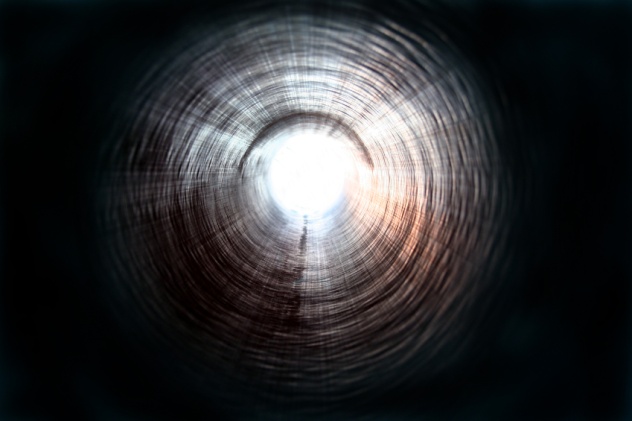
Some who have had near-death experiences claim to have seen their lives flash before their eyes. This phenomenon is now called a “life review.” Sometimes, it’s their entire lives from beginning to end. Other times, it’s only a few select highlights. Some even report experiencing events from the perspectives of those they hurt. Some say their experience was guided by deceased family members or a kind of celestial being of light.
As rare as near-death experiences are, those who claim to have had a life review are even rarer. Studies differ on exactly how many people experience them, but one study found that approximately 25 percent of people who have near-death experiences also have life reviews. Interestingly, though, while many parts of near-death experiences are cross-cultural, such as Heaven often (but not always) appearing as a field or garden, the life review is controversial in that it is not shared by Pacific and hunter-gatherer societies. They are also far more likely to occur when the near-death crisis is unexpected (as opposed to ones that occur during surgeries or suicide, for example).
During the near-death experience, people report experiencing a range of events. Aside from the well-known experience of traveling into the light, some people are greatly distressed by hellish, nightmarish images. Others report voids. Those who experience these kinds of negative experience also tend to experience negative life reviews.
Regardless of the contents of the life review, almost all of the people who had them said they experienced some form of judgment. Sometimes, it was from themselves, and other times, it was from some sort of being of light or God. Some found peace, but for others it was not always pleasant.
4 The Summerland
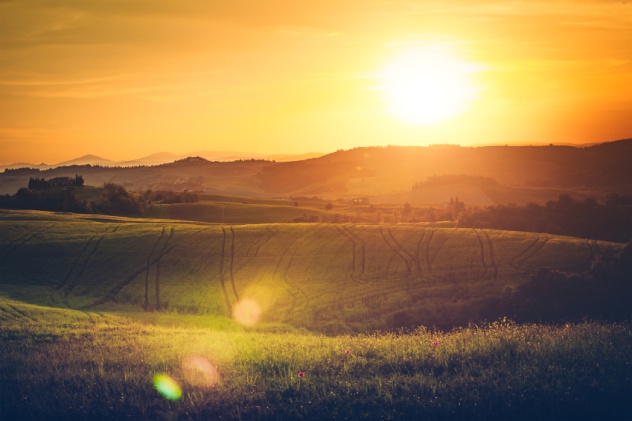
Summerland is often called the “Wiccan Heaven,” though it is really more like a limbo. It is a place where the dead go to rest and reflect on their lives, without judgment, before their next reincarnation. Since Wicca is a decentralized religion, the specifics of the Summerland can differ.
Some Wiccans believe that what a soul learned from its previous life will then influence their next in a kind of karma. For example, someone who bullied kids will probably get bullied in his next life so he can learn from the experience. Others believe that a person’s next reincarnation is an event that they plan, inserting themselves into the world where they could learn even more until they have learned enough to reach a level of higher being. Once they reach this pinnacle of existence, they stop their cycle of rebirth and remain in the Summerland.
Some souls decide not to be reborn into the world immediately, instead remaining as spirits to act as spirit guides for their friends and relatives still on Earth. There is a belief that some souls travel in groups and meet each other throughout each cycle of rebirth. A spouse in one life, for example, could become your boss in the next. (For some, that may not be much of difference.)
3 Spirit World And Spirit Prison
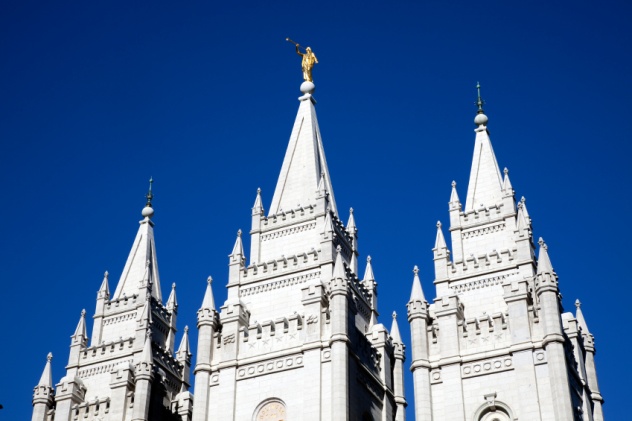
The Mormon Spirit World is a place righteous souls go to await the day of resurrection. Spirits in the Spirit World are a lot like their incarnations in this world. Their attitudes, appetites, and desires are all the same as on Earth. They have the same form as mortals, but their spirit body is both perfect and an adult, since Mormons believe that all spirits were adults before they were born into this world.
Mormonism claims that the Mormon Church in the Spirit World is organized just like on Earth. Priests hold their same positions and carry out the same tasks even after physical death. Families also remain unchanged, unless they did not honor their calling in life.
While the Spirit World is for the righteous, Spirit Prison is for the unrighteous. Those who did not accept Jesus on Earth will be sent there. The most extreme form is Hell, although unlike Hell, those in Spirit Prison can leave if they accept Jesus and repent their sins. To that end, Mormonism believes that, unlike the Bosom of Abraham, in which the righteous were divided from the wicked by a gap, the gap was bridged by Jesus. Righteous souls can go into Spirit Prison and preach the gospel. Those souls who accept it are released and enter the Spirit World.
2 Limbo Of The Infants

The question of where unbaptized infants go after death posed a problem for the ancient Catholic Church, since the New Testament was silent on the issue. The church believed in original sin separating man from God and that being baptized was necessary for admittance into Heaven. Still, babies were not wicked, so God certainly couldn’t be sending them to Hell like adult sinners.
In response to this conundrum of faith, several theories were proposed. One was the “Limbo of the Infants.” Early thought had it as a lesser place in Hell where the babies would be separated from God but wouldn’t endure any punishment. The reasoning for this was that they were not sinful, but not meriting punishment did not make them worthy of being honored with entry into Heaven. Later, the general consensus was that they could enjoy the full natural goodness they possessed while in the Limbo of the Infants and thus experience perfect natural happiness. There was also a belief that they would be reincarnated upon the resurrection and live happily in the new world for all eternity.
“Limbo of the Infants,” however, is only a term used to discuss the imagined place, since it is not a part of Catholic doctrine. Modern Catholicism now states that it trusts God to save unbaptized infants, since the sacraments are bound to God, but God is not bound to the sacraments. In short, the stance of the Catholic church is that all babies go to Heaven.
1 The Hall Of Two Truths
In ancient Egyptian religion, before a soul entered Heaven, it would be led to the Hall of Two Truths. There, before the gods, it would recite a ritual confession called the “42 negative confessions,” which claim that it is not guilty of any offenses that are punishable, such as theft, murder, or insulting the gods. The confession would end with the statement, “I am pure,” repeated several times.
But more than words were needed for entrance in to the Field of Reeds, the ancient Egyptian Heaven. The Hall of Two Truths was also called the Hall of Maat because after the confessions were over, souls would be weighed on a golden scale against the feather of Maat, which represented truth. A number of gods were present for the weighing, including Thoth, who stood to the right of the scales and both proclaimed the soul’s sins and recorded the results of the tests. If the soul was found lighter, it was granted entrance into the Field of Reeds, where there was no sickness, disappointment, or death. Souls lived forever by streams and beneath trees that they had loved in life, a belief that prompted some to plant trees.
But if the soul was found to be heavier than the feather of truth, it was not sent to Hell; there was no Hell for the ancient Egyptians. Souls that were not pure enough to enter the Field of Reeds were cast to the floor. There, they were summarily devoured by the crocodile-headed god Ammut and ceased to exist.
Nathan keeps a Japan blog where he writes about the sights, expat life, and finds Japanese culture in everyday items. You can also find him on Facebook and Twitter.







